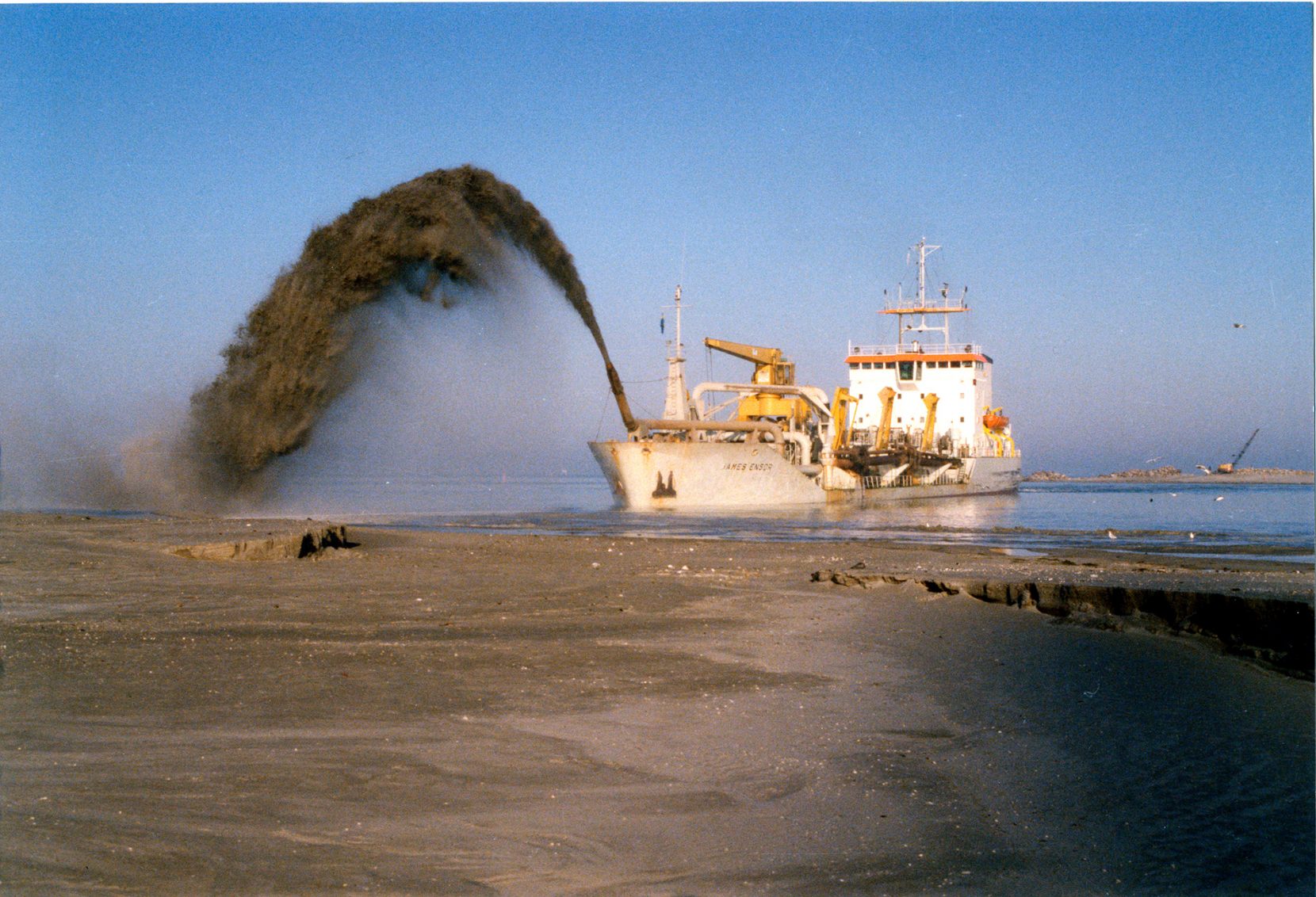How do TSHDs operate?

Drag Arm
TSHD’s have articulated dredging pipes, known as “drag arms” that extend to the seabed. At the end of the drag arm, a drag head is attached. These dredgers move at low speeds suctioning up the seabed material through the drag heads and pipes, and up to the hopper.
The flow generated by the dredge pumps dislodges material, which can then be transported in liquid state as slurry through the suction pipes, the centrifugal pump and into the hopper.
Discharge
The material is discharged through either doors or valves in the hopper’s bottom or, in the case of a split-hulled vessel, out of the bottom when the hull is split longitudinally. Alternatively, material may be pumped from the hoppers through discharge pipes to shore-based placement sites with or without the use of booster pumps. Often sediment is “rainbowed” – that is, sprayed in a high arc placing it directly onshore or at the reclamation site.